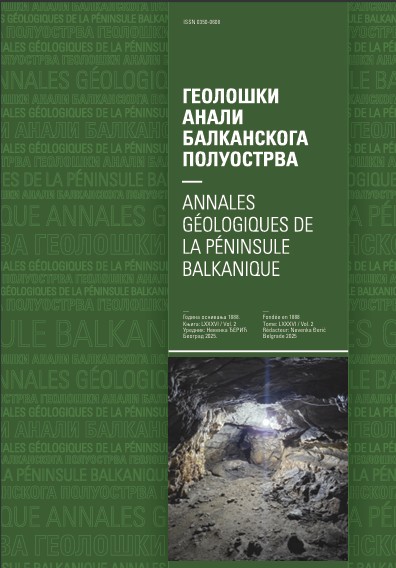New data concerning the Early Middle Miocene on the southern slopes of Fruška Gora (Northern Serbia): a case study from the Mutalj quarry
Abstract
During the last few years, geological research at the southern slopes of Fruška Gora Mt. enabled the discovery of different Miocene units (undivided the Lower Miocene and Middle Miocene Badenian, predominantly). This is primarily thinking of the so-called Leitha limestone (Middle Miocene, Badenian), which is an important component in cement production (La Farge Co., Beočin). The high carbonate content (more than 98 %) allows it to be a very important raw material that is mixed with Pannonian marl in the process of cement manufacture. Continuous exploitation of this rock at the Mutalj Quarry enabled an insight into its structural, stratigraphic, sedimentological and hydrogeological features, as well as its relation to the other underlying/overlying units. Numerous fossils (i.e., red algae, mollusks, corals, bryozoans, and foraminifers) and their biostratigraphic range indicate to Middle Miocene Badenian age. Based on data from different boreholes, structural and sedimentological characteristics, spatial distribution, etc., a relatively large rock body was discovered (approx. 0.3 km2). Within these Leitha limestones, there are frequent cracks and caverns infilled with fine lateritic clays and alevrites. These clays were sampled for a paleomagnetic study. The carrier of the primary remanent magnetization (RM) is magnetite that has a primary origin. Lateritic clays are characterized by significant value of magnetic susceptibility. The degree of anisotropy of the magnetic susceptibility (AMS) is low with the dominant magnetic foliation.
Copyright (c) 2011 Geološki anali Balkanskoga poluostrva

This work is licensed under a Creative Commons Attribution 4.0 International License.










